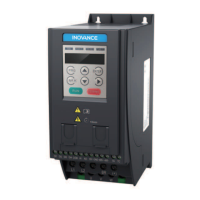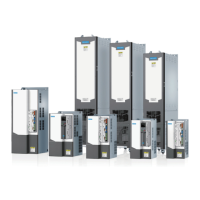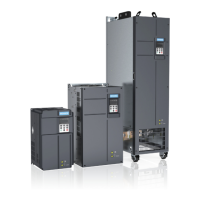Electrical Installation
‑145‑
Use shielded twisted pair cables. Minimize the length of unshielded part of the
cable (about 5–7 mm) and wrap the exposed part with insulation tape to prevent
the shielded cable from coming into contact with other equipment and incurring
interference.
3. Motor cable requirements
Use shielded cables. Minimize the distance between the cabinet module and the
motor, and route the motor cables routed independently of other cables. Also,
avoid long‑distance parallel routing of the motor cables and other cables to reduce
electromagnetic interference caused by rapid changes in the output voltage of the
AC drive.
4. Power cable requirements
Use shielded cables, or shield all the cables from the cabinet module to the motor
by using wire tubes.
5. Requirements of control cables and power cables
When the power cables and control cables must be intersected, the intersection
angle shall be 90 degrees.
7.4.5 Routing Recommendations
Routing for disturbing cables and sensitive cables
During routing, separate cables that transmit different types of signals. Separate the
disturbing cables from sensitive cables by a distance of 30 cm wherever possible.
When two types of cables must be intersected, the intersection angle shall be 90
degrees to avoid interference, as shown in the following figure.

